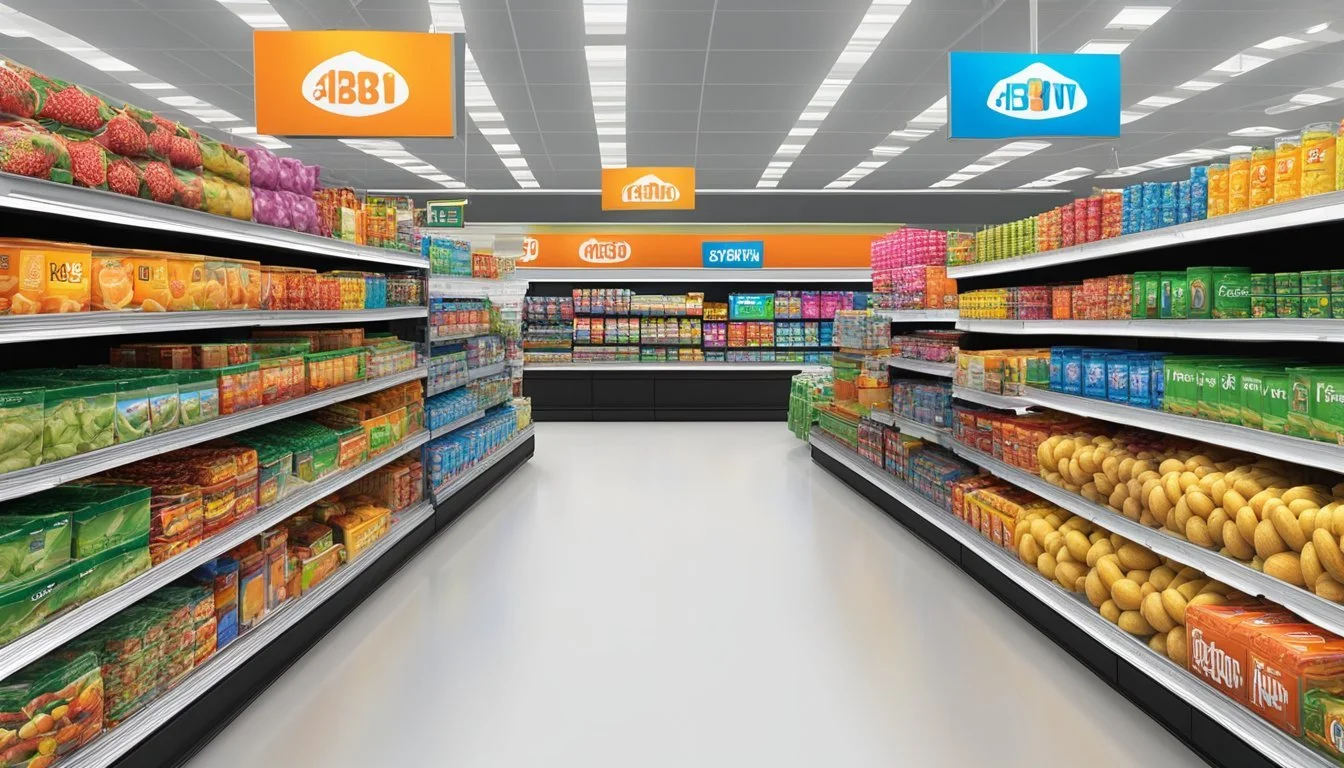Five Below vs Hannaford
A Comprehensive Comparison of Budget and Traditional Options
Grocery shopping often involves a delicate balance between price and quality. Five Below and Hannaford represent two distinct approaches to this retail challenge. While Five Below focuses on offering a variety of low-cost items, Hannaford positions itself as a full-service supermarket with a broader range of products.
Hannaford generally offers better overall value for grocery shoppers, with competitive prices and higher quality produce and meats compared to Five Below. This Maine-based chain has built a reputation for fresh, locally sourced products and a wide selection of grocery staples. Five Below, on the other hand, specializes in discount items priced at $5 or less, which may include some food products but not a comprehensive grocery selection.
When considering where to shop, consumers should weigh their specific needs. Those seeking a one-stop shop for weekly groceries will likely find Hannaford more suitable. Budget-conscious shoppers looking for specific low-cost items might find Five Below useful for certain purchases, but it cannot serve as a primary grocery source for most households.
Comparing Business Models
Five Below and Hannaford operate with distinctly different business models in the retail sector.
Five Below focuses on selling trendy, low-cost items primarily to young consumers. Their stores offer a wide variety of products priced at $5 or less.
Hannaford, in contrast, is a traditional grocery store chain. They provide a full range of food and household items at various price points to serve a broader customer base.
Key Differences:
Product Range: Five Below - limited, trend-focused items; Hannaford - comprehensive grocery selection
Pricing Strategy: Five Below - fixed low prices; Hannaford - competitive market pricing
Target Audience: Five Below - youth and budget-conscious shoppers; Hannaford - general public
Five Below's model emphasizes rapid inventory turnover and impulse purchases. Hannaford's approach centers on being a one-stop shop for essential household needs.
Both companies face competition from other retailers. Five Below competes with discount stores, while Hannaford contends with other grocery chains like Market Basket.
Hannaford's business model includes features like in-store pharmacies and loyalty programs to enhance customer retention. Five Below, on the other hand, relies on its unique price point and product mix to attract repeat visitors.
Product Range and Quality
Five Below and Hannaford offer distinct product ranges and quality levels, catering to different consumer needs. Their selections vary significantly in terms of grocery items, fresh produce, and prepared foods.
Assortment of Products
Five Below focuses on budget-friendly non-grocery items, primarily selling products priced at $5 or less. Their inventory includes toys, games, electronics accessories, home decor, and seasonal items. In contrast, Hannaford is a full-service supermarket with a comprehensive grocery selection. They stock a wide range of food products, household essentials, and health and beauty items.
Hannaford's shelves are filled with national brands, private label options, and locally sourced goods. They offer an extensive selection of pantry staples, frozen foods, dairy products, and beverages. Five Below's limited grocery offerings typically consist of snacks, candies, and beverages, but lack the depth and variety found in a traditional supermarket.
Quality of Produce
Hannaford takes pride in its produce department, offering a diverse selection of fresh fruits and vegetables. They source from local farms when possible, ensuring freshness and supporting regional agriculture. The produce section is regularly restocked and maintained to high standards.
Five Below does not have a dedicated produce section. Their food offerings are limited to packaged snacks and occasional seasonal fruit-flavored candies. For customers seeking fresh produce, Hannaford is the clear choice between the two retailers.
Meat and Store-Prepared Foods
Hannaford provides a full-service meat department with trained butchers on staff. They offer a variety of cuts, including beef, pork, poultry, and seafood. Many Hannaford locations also feature a deli counter with sliced meats, cheeses, and prepared salads.
The supermarket chain has expanded its selection of store-prepared foods in recent years. Customers can find ready-to-eat meals, rotisserie chickens, and freshly made sandwiches. These options cater to busy shoppers looking for convenient meal solutions.
Five Below does not offer fresh meat or store-prepared foods. Their focus remains on non-perishable snack items and beverages. Shoppers looking for meal ingredients or fresh deli options will need to look elsewhere for these products.
Price Comparison
Five Below and Hannaford offer different pricing strategies and product ranges. Their approaches to everyday pricing and discounts impact overall consumer savings.
Everyday Pricing
Five Below maintains a consistent price point of $5 or less for most items. This strategy simplifies shopping for budget-conscious consumers. Hannaford, as a traditional grocery store, has a wider range of prices across its product categories.
At Hannaford, staple items like milk, bread, and produce are competitively priced. The store's private label products often offer lower prices compared to national brands.
Five Below focuses on non-perishable goods, toys, and accessories. Their $5 maximum price allows for easy budgeting but limits product selection.
Discounts and Savings
Hannaford provides various ways for shoppers to save money. The store offers weekly sales, digital coupons, and a loyalty program. Customers can find discounts on both brand-name and store-brand products.
Five Below rarely offers additional discounts due to its already low price point. However, they occasionally run promotions on seasonal items or clearance products.
Hannaford's sales circulars feature rotating deals on groceries and household items. Their My Hannaford Rewards program allows customers to earn points on purchases, which can be redeemed for future savings.
Five Below's lack of a loyalty program or regular sales events may result in fewer opportunities for additional savings compared to Hannaford.
Shopping Experience
The shopping experience at Five Below and Hannaford differs significantly in several key areas. Each store caters to distinct customer needs and preferences.
Store Layout and Cleanliness
Five Below stores are typically bright and colorful, with wide aisles organized by product categories. The layout encourages browsing, with eye-catching displays showcasing trendy items. Cleanliness is generally maintained, though high traffic areas may become cluttered during peak hours.
Hannaford supermarkets feature a more traditional grocery store layout. Produce sections are often near the entrance, with clearly marked aisles for different food categories. The stores prioritize cleanliness, with regular cleaning schedules and well-maintained shelves. Hannaford's layout is designed for efficient grocery shopping, allowing customers to quickly find essential items.
Customer Service
Five Below emphasizes a fun, energetic atmosphere. Staff members are usually young and approachable, ready to assist with product locations or questions. However, the level of product knowledge may vary due to the constantly changing inventory.
Hannaford focuses on professional and helpful customer service. Employees are often well-trained in their specific departments, providing knowledgeable assistance with food selections or special requests. The pharmacy and deli counters offer personalized service, enhancing the overall shopping experience.
Convenience and Accessibility
Five Below stores are commonly found in shopping centers or strip malls, providing easy access for shoppers. The compact store size allows for quick trips, ideal for impulse purchases or gift shopping.
Hannaford supermarkets offer a one-stop shopping experience for groceries and household essentials. Many locations feature pharmacies, making prescription pick-ups convenient. Some stores provide online ordering and curbside pickup options, catering to busy customers. Hannaford's larger store format accommodates a wider range of products but may require more time to navigate.
Consumer Perceptions and Brand Reputation
Five Below and Hannaford have distinct consumer perceptions and brand reputations. Market research and surveys provide insights into how customers view these retailers. Customer loyalty and trust play key roles in shaping their standing among shoppers.
Market Research and Surveys
Consumer Reports and Consumers' Checkbook regularly conduct surveys on grocery stores. Hannaford has been included in these studies, often receiving positive ratings. A Consumer Reports survey ranked Hannaford favorably among regional grocery chains.
Five Below, as a discount retailer, is not typically included in grocery store surveys. However, it has gained popularity for its low-priced items targeting younger consumers.
Research indicates that Hannaford's reputation benefits from its focus on fresh produce and store-brand products. Five Below's brand perception centers on affordability and trendy merchandise for teens and young adults.
Customer Loyalty and Trust
Hannaford has built customer loyalty through its rewards program and community involvement. The chain's emphasis on local sourcing and sustainability resonates with many shoppers.
Five Below's trust is based on consistently low prices and frequently updated inventory. Its "five dollars or less" concept creates a treasure hunt shopping experience that appeals to budget-conscious consumers.
Shaws and Ingles, regional competitors to Hannaford, also factor into customer loyalty dynamics. Some shoppers split their purchases between these stores based on specific preferences or promotions.
Trust in both retailers stems from different factors. Hannaford's reputation for quality groceries contrasts with Five Below's appeal as a fun, low-cost shopping destination.
Store Brands and Private Labels
Five Below and Hannaford take different approaches to store brands and private labels. Five Below focuses on selling branded items at discounted prices, rather than developing its own private label products.
Hannaford, as a traditional grocery store, offers a range of private label options. Their store brand, simply called "Hannaford," covers a wide variety of products across different departments.
Hannaford's private label items aim to provide quality alternatives to national brands at lower prices. These products span categories like groceries, household goods, and personal care items.
Quality is a key focus for Hannaford's store brand. The company works to ensure its private label offerings meet or exceed the standards set by national brands.
As a New England grocery store chain, Hannaford tailors some of its store brand products to regional tastes and preferences. This localized approach helps distinguish their private label from national competitors.
Store brand items often provide significant cost savings for consumers. Hannaford's private label products typically offer lower prices compared to equivalent national brands, without compromising on quality.
By contrast, Five Below's business model centers on selling trendy, brand-name products at $5 or less. This strategy differs from traditional grocery stores' emphasis on private labels.
Regional Presence and Market Share
Five Below and Hannaford occupy distinct positions in the retail landscape. Five Below primarily operates as a discount store chain, while Hannaford is a grocery retailer.
Hannaford has a strong regional presence in New England. It operates 63 stores in Maine alone and has a significant footprint across the Northeast. The company partners with over 800 local suppliers to stock its shelves.
In contrast, Five Below has a broader national presence but focuses on non-grocery items. Its stores can be found in many states across the U.S.
Among New England grocery stores, Hannaford faces stiff competition. Market Basket, a regional powerhouse, offers prices about 18% lower than the average. This translates to potential annual savings of $2,300 for a family spending $250 weekly on groceries.
Other regional players like Stop & Shop and Shaw's also compete for market share in the Boston area. However, Hannaford maintains a loyal customer base due to its focus on local products and community engagement.
While exact market share figures are not provided, the search results indicate that regional grocers command a significant portion of store visits. This suggests that chains like Hannaford play a crucial role in the New England grocery market.









